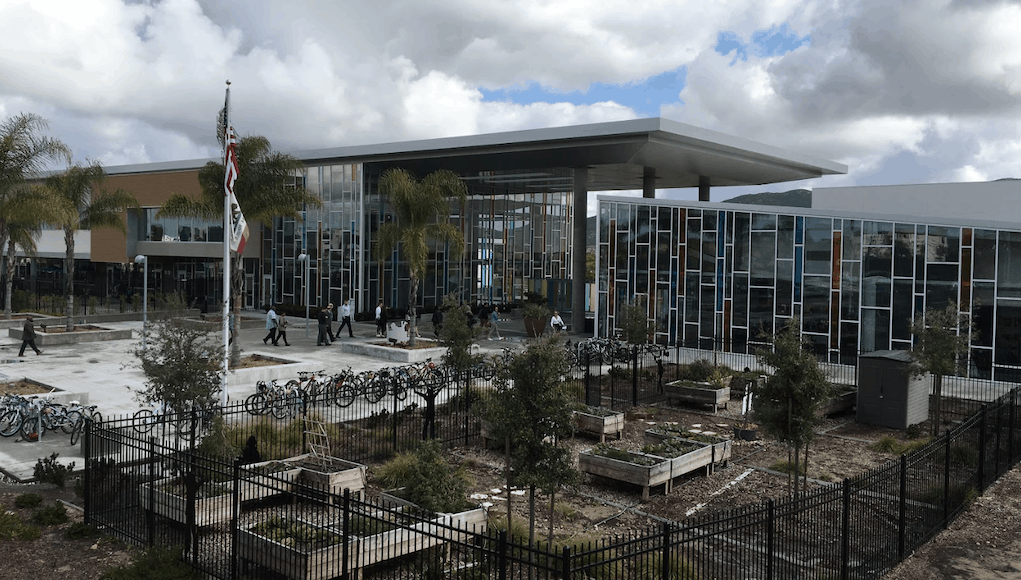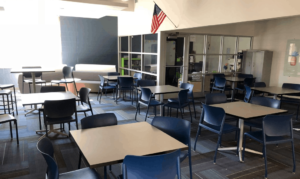It’s Time to Separate Facilities From Operations

The way we build, manage and maintain public school buildings is inefficient and exacerbates some of the biggest challenges in public education. With the growth of the public charter school sector, the rise of tech-infused learning models, and the migration of student populations across options and geographies, it’s time for us to rethink the relationship between learning programs and public facilities. It’s time to decouple the delivery and the ownership of school buildings.
School districts are usually granted two special powers by their state constitution: the right to grant diplomas and the right to levy taxes. Most districts run an annual operating levy that (in most states) augments state funding. Districts periodically propose a tax to build and remodel schools.
There are four old problems with this way of provisioning facilities:
- Inequity. The tax base (specifically aggregate value of property per capita) is much lower in high poverty communities; hence beautiful schools for the rich, and run down schools for the poor.
- No maintenance. Most districts can only raise money in big chunks repaid over 30 years. In between districts don’t have a reliable way to pay for regular maintenance. As a result, districts let schools get really run down and then do major remodels when they can raise money (state matching incentives can exacerbate this perverse behavior).
- Tech with bonds. Because few districts can pass a separate levy for technology (and other 3-5 year assets), districts buy lots of technology and pay for it with 30-year bonds.
- No portfolio management. A medium sized district with 20,000 kids probably has a real estate portfolio worth several billion dollars, but there is often no one charged with actively managing the portfolio and balance sheet.
There are some new problems with the way we provision schools:
- Shrinking enrollments. Most urban school districts are shrinking in enrollment because birth rates are down and competition is up. Aging buildings and shrinking enrollment creates a nightmare operating scenario and a challenging facilities situation which can include the need to raise bond money to update and consolidate schools.
- No charter capacity. There are more than 7,000 charter schools nationwide and most of them don’t have access to local funding or public facilities. As the former head of the National Alliance of Public Charter Schools Nelson Smith noted, this is a big flaw in public policy–more than 6% of kids attend schools with no means for provisioning facilities. Charter schools typically can’t access bond funding or other low-interest financing vehicles. Without local funding, they usually operate on a smaller budget and then have to pay rent. Most school districts with unused or underutilized facilities don’t share with charter schools so new schools get built while others sit empty–a huge waste of public facilities and resources.
- Flexible space. The shift to personalized and project-based learning requires an investment in creating flexible spaces (we called active learning spaces the top trend of 2018). Like New Tech Network schools you have to knock some walls down or like Albemarle County, you need to build flexible multiage space.
- Community learning. With better access to digital tools, education is shifting from a place, to anywhere anytime learning. With more competency-based, place-based and work-based learning, online learning and dual enrollment, space requirements are going down and changing. The rise of rideshare and autonomous transportation will accelerate the trend toward community-based learning and the need for flexibility.
Most communities have a mixture of old and new problems–a need for modern flexible spaces and a mismatch between taxing authority and need. That’s why it is time to separate school operations from facilities provisioning. Following is a proposal to change how facilities are provided for public education programming
Move facilities into a public trust. Moving school facilities into a public trust would enable one public entity to focus entirely on ensuring that facilities were used to promote efficiency and school quality. It could solve the access challenge for charters, create new funding streams to finance infrastructure upgrades to promote technology and help districts to build endowments that could be reinvested in other areas like instructional innovation and teacher quality.
A new and more flexible provisioning mechanism would benefit the creation of innovative small schools linked to community assets such as museums, libraries, colleges, employment clusters or addressing specific community needs.
It will probably take a constitutional amendment and/or really good incentives to convince districts to transfer facilities to a trust. Urban districts could, as an alternative, sell properties to a public Real Estate Investment Trust (REIT). Like the sale of student loan portfolios that formed Lumina and KnowledgeWorks and the sale of a nonprofit hospital that formed Colorado Education Initiative, property sales could yield huge proceeds.
Incentives for transfer could include:
- Districts could keep a portion of the sale proceeds to form their own endowment;
- The trust would provide attractive lease terms; and
- The trust would make investments in modernization including flexible learning spaces.
Provide state fixed asset funding. In addition to weighted, portable, performance-based operating funding, states should add about 10% for facilities and fixed assets (e.g., $50 on top of $500 for a semester credit). The additional funding would allow any authorized school or provider to lease facilities and buy equipment. A small increase in state tax could be offset by the reduction in local facilities tax.
Performance contracts for operators. While we’re making sweeping changes, states could put all school operators and education service providers on a performance contract–authorizing as the accountability system. School operators could match their contract term with their lease term. If their enrollment grows, they can lease more space.
The basic inequity of locally provisioned facilities and the growing number and type of educational providers suggests that it’s time for a new solution. We need to separate service provision from facilities development and management. It won’t be easy but it needs to happen.
For more, see:
- Getting Started with High School Redesign
- Next Generation School Design
- Good Governance: The Foundation for Good Schools
Stay in-the-know with innovations in learning by signing up for the weekly Smart Update.
This is an update to a 2013 blog post.








0 Comments
Leave a Comment
Your email address will not be published. All fields are required.